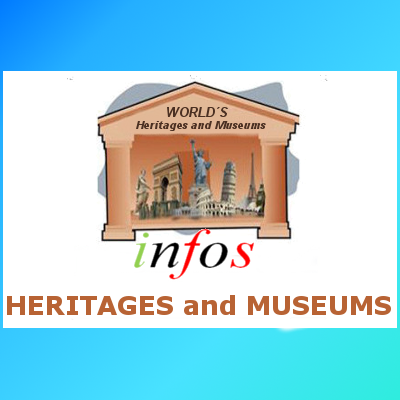What you need to know
Chongqing, formerly transliterated as Chungking[a], is a major city in Southwest China and one of the Five national central cities in China. Administratively, it is one of China’s four direct-controlled municipalities, and the only such municipality in China located far away from the coast.
In the city center, the large, domed Great Hall of the People complex stands above pedestrianized People’s Square. On the other side of the square, the Three Gorges Museum features artifacts from the construction of the Three Gorges Dam as well as ancient art. Chongqing is also the launching point for scenic boat trips down the Yangtze River through the Three Gorges Dam. The Buddhist Dazu Rock Carvings are located three hours west of Chongqing City in the outlying Chongqing Municipality and is listed as an UNESCO World Heritage Site.
Population: 9.692 million (2000)
Area: 82,300 km²
Currency
The official currency in China is the Renminbi (RMB or CNY) or in Chinese “Ren-min-bi”. The basic unit is the yuan (also known as “kuai”), which equals 10 jiao (or “mao”), which is then divided into 10 fen. Paper currency comes in 1.2,5,10,50 and 100 yuan notes. Paper jiao come in denominations of 1, 2, and 5. There are also 1 and 2 fen notes, but these are rarely used as they have no purchasing power. 1 yuan, 1 and 5 jiao, and 1, 2, and 5 fen coins are even common used in larger cities.
Major credit cards such as Master Card, Visa, JCB and American Express are accepted in major hotels and department stores. Check on the acceptance of your credit card before you purchase. Credit cards cannot be used in most restaurants or small convenience stores. Air Travel could be purchased with credit cards. Credit cards can be used to get a cash advance in the main offices of the Bank of China.
Climate
Chongqing is located in the subtropical climate zone. The climate belongs to the humid sub-tropical monsoon climate. Chongqing is known as one of the “three furnaces” of the Yangtze River Delta, the other two being Wuhan and Nanjing. It is also a foggy city. Late fall to early spring is the fog season. The average low temperature in winter is about 6 °C (43 °F). The average high temperature in summer is about 31 °C (90 °F).
The annual average precipitation is about 1,400 mm (inches). When spring and summer meet, it often rains at night. Most days are foggy in winter and spring. The hottest months are also the rainiest months. In the summers, the rain, humidity and high temperatures makes the city uncomfortable. Travel during the winter is probably too cold and bleak. Less rainy, April, September and October are probably the best months for travel. For a river cruise, perhaps coming in the summer and fall is the best so that you can bask in the sun.
Languages
The language native to Chongqing is Southwestern Mandarin. More precisely, the great majority of the municipality, save for Xiushan, speak Sichuanese, including the primary Chengdu-Chongqing dialect and Minjiang dialect spoken in Jiangjin and Qijiang. There are also a few speakers of Xiang and Hakka in the municipality, due to the great immigration wave to the Sichuan region (湖广填四川) during the Ming and Qing Dynasties. In addition, in parts of southeastern Chongqing, the Miao and Tujia languages are also used by some Miao and Tujia people.
Safety
Chongqing is not known for any specific threats to personal safety and few visitors are likely to experience anything untoward during their stay. Certainly violence towards tourists is extremely rare and generally speaking, it’s safe for members of both sexes to go out and about anywhere in the city during daylight hours. Come night time, female visitors are not advised to travel alone on public transportation although the risks of incidents are still relatively low.
Petty crime exists in the city of course, although it’s less prevalent than in a European city of the same size. Visitors can reduce their chances of being targeted by pickpockets or bag snatchers by keeping their wits about them in busy public places and carrying their cash and valuable personal items in secure and hard to reach places. Avoid flashing expensive jewellery or items of especially high value in public; such articles are best left in hotel safes unless there is a specific need to take them out with you.
Economy
Chongqing was separated from Sichuan province and made into a municipality in its own right in March 14 1997 in order to accelerate its development and subsequently China’s relatively poorer western areas (see China Western Development strategy). An important industrial area in western China, Chongqing is also rapidly urbanising. For instance, statistics suggest that new construction added approximately 137,000 square metres (1,470,000 square feet) daily of usable floor space to satisfy demands for residential, commercial and factory space. In addition, more than 1,300 people moved into the city daily, adding almost 100 million yuan (US$15 million) to the local economy.
Traditionally, due to its geographical remoteness, Chongqing and neighbouring Sichuan have been important military bases in weapons research and development. Chongqing’s industries have now diversified but unlike eastern China, its export sector is small due to its inland location. Instead, factories producing local-oriented consumer goods such as processed food, cars, chemicals, textiles, machinery and electronics are common.
Getting Around
The use of bicycles may not be a safe option due to the driving ettiqutte and custom in the city is generally poor.
First timers to Chongqing should also be warned it is easy to get lost due to the many hills and valleys found within the city.
The bus systems and monorails are advised as the best forms of transportation as they are cheap and efficient.
The first part of Chongqing’s new rapid transit system opened as a monorail in 2005. The system was only useful for getting around in the city center, but major expansions have now linked major railway stations, major shopping districts and the airport, with more extensions under construction. Announcements are made both in Mandarin and English. No smoking is allowed and all services are airconditioned, which is a reason alone to board one from April to September! Don’t forget your electronic ticket card to get out of the station. If you overshoot your stop just go to the service counter and add value to your card.
Buses are frequent and cheap, but unless you can read Chinese you have to know where they are going and choose the right number bus going in the right direction. If you are going to one of the city centres in Chongqing, simply ask each bus if they go there. There are four city centres, so be sure you know the name of the place you want to go to.
Taxis in Chongqing are bright yellow small sized Suzuki sedans. They are relatively cheap, though more than similar cities due to a strong taxi union (starting at ¥10 and ¥2.0/km, ¥11 and ¥2.3/km after midnight) and can be easily found 24 hours a day. Few drivers speak anything but Mandarin, so you must know where you are going. Either have your destination written for you in Chinese, learn how to say it, or be able to direct the driver. A good way to use taxis is to gather cards from hotels, then simply show the driver the one you want to go to or is nearest to your destination. Empty Taxis are hard to find on extremely hot days. It is advisable to seek alternative transportation or stay indoors. The reason is due to the fact that most Taxis have A/C running thus making more frequent stops to the natural gas station.
Cuisine
Chongqing food is largely a hybrid of Sichuan cuisine and local specialty dishes. Chongqing is known for its spicy food. Its food is normally considered numbing because of the use of Sichuan pepper, also known as Sichuan peppercorn, containing hydroxy alpha sanshool. Chongqing’s city centre has many restaurants and food stalls where meals often cost less than RMB10. Local specialties here include dumplings and pickled vegetables and, different from many other Chinese cuisines, Chongqing dishes are suitable for the solo diner as they are often served in small individual sized portions. Among the delicacies and local specialties are these dishes:
- Hot pot – Chongqing’s local culinary specialty. Tables in hotpot restaurants usually have a central vat, or pot, where food ordered by the customers is boiled in a spicy broth. As well as beef, pork, lotus and other vegetables, items such as pig’s kidney, brain, duck’s bowels and cow’s stomach are often consumed.
- Jiangtuan fish – since Chongqing is located along Jialing River, visitors have a good opportunity to sample varieties of aquatic products. Among them, is a fish local to the region, Jiangtuan fish: Hypophthalmichthys nobilis although more commonly known as bighead carp. The fish is often served steamed or baked.
- Pork leg cooked with rock candy – A common household dish of the Chongqing people, the finished dish, known as red in colour and tender in taste, has been described as having strong and sweet aftertaste.
- Qianzhang (skimmed soy bean cream) – Qianzhang is the cream skimmed from soybean milk. In order to create, this several steps must be followed very carefully. First, soybeans are soaked in water, ground, strained, boiled, restrained several times and spread over gauze until delicate, snow-white cream is formed. The paste can also be hardened, cut into slivers and seasoned with sesame oil, garlic and chili oil. Another variation is to bake the cream and fry it with bacon, which is described as soft and sweet.
- Quanshui Chicken (Spring Water Chicken) – Quanshui Chicken is cooked with the natural spring water in the Southern Mountain of Chongqing.
- Xiao mian (little noodle) – lamian noodles with chili oil and rich mixtures of spices and ingredients.










